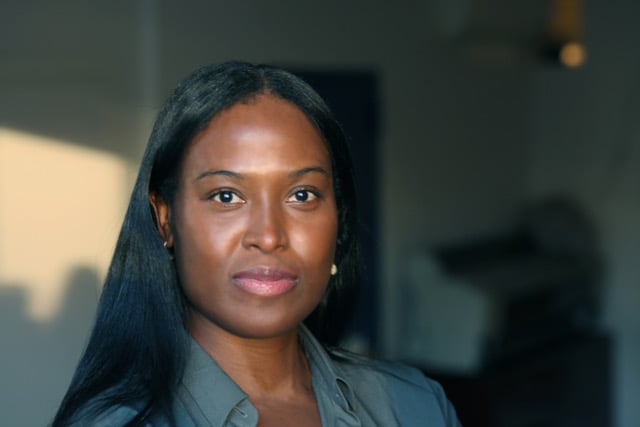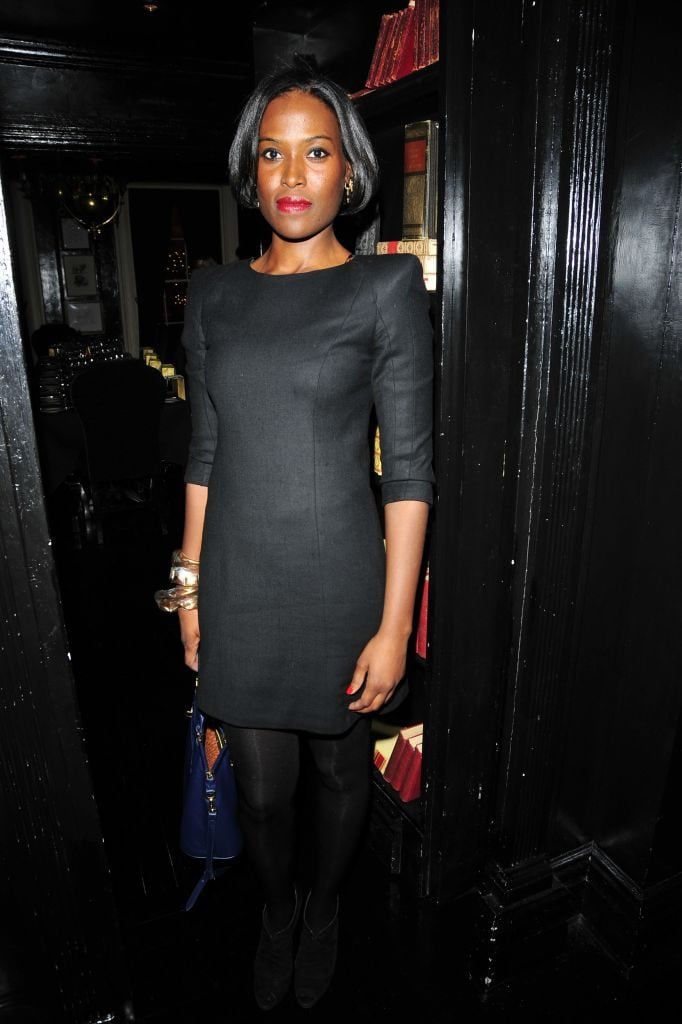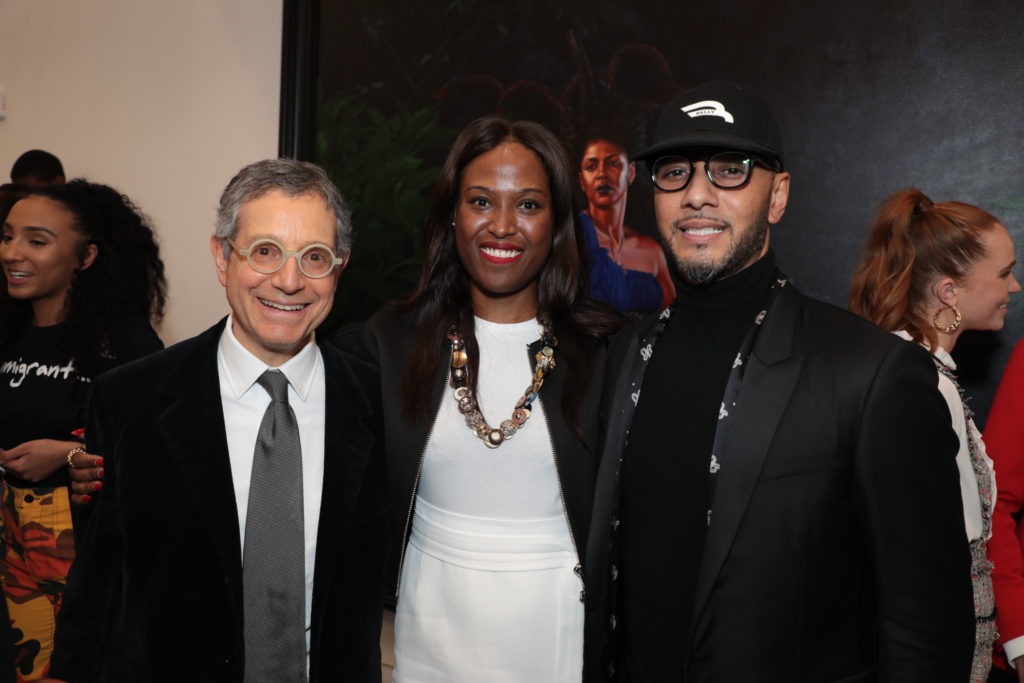People
‘Rewarding Experiments, Strong Relationships, and Luck’: Art Dealer Nicola Vassell on the Ingredients of Success
Vassell is set to open her own gallery in early 2021.

Vassell is set to open her own gallery in early 2021.

Noor Brara

Few people in the art world have had a career as complex as Nicola Vassell’s.
After leaving Jamaica for New York in the late ’90s to pursue a career as a fashion model and culture writer, Vassell landed some of the art industry’s most coveted roles, including directorial positions at Deitch Projects and Pace gallery, two New York art-world institutions.
While at Deitch, Vassell worked with then-emerging artists such as Sterling Ruby and Dan Colen to curate “Substraction,” an exhibition chronicling the grit of New York life post-9/11, while also overseeing the careers of artists like Kehinde Wiley, Tauba Auerbach, and Nari Ward. At Pace, she worked with the likes of Adam Pendleton, Robert Irwin, and Raqib Shaw.
Then, in 2014, following the death of her father, Vassell left Pace to start Concept NV, an art consultancy and curatorial agency of her own.
Through her agency, she organized acclaimed shows, including “Black Eye” in 2014 (which included works by artists such as Deana Lawson, Simone Leigh, Kerry James Marshall, Toyin Ojih Odutola, and Wangechi Mutu). The show, which assessed Black identity during the Obama era, “served as a precursor to the explosion of Black identity politics and the Black Renaissance art movement,” she says.
In accordance with her enduring interest in the ways the art world intersects with other creative fields, Vassell has also worked alongside major figures in entertainment and Hollywood, serving as curator for Swizz Beatz and Alicia Keys’s Dean Collection, for which she has acquired work by Nina Chanel Abney, Derrick Adams, Jordan Casteel, and Nick Cave, among others. She also consulted on the popular Fox show Empire, whose producers hired her to outfit film sets with works by artists such as Wiley, Mutu, Odutola, Marshall, and others.
In early 2021, Vassell will take on her next and arguably most ambitious role yet, opening a gallery that aims to elevate the voices of both established and emerging artists from diverse backgrounds.
Though Vassell remains mum about the opening date, she shared that the first exhibition will feature the work of photographer Ming Smith.
Vassell sat down with Artnet News to discuss her career trajectory, her new gallery, and what 2020 has taught her, both personally and professionally.
How did you come to work in the art world? What initially attracted you to the visual arts?
While in university, I did a course on the legacies of great art dealers. Towards the end of term, I had a chance encounter with Jeffrey Deitch, who we had actually studied. He offered me an internship at his gallery, which I accepted. I was still modeling part-time and, by then, had been writing and editing for a number of magazines I’d shot for, including Vibe and Trace. I felt that the arts—specifically writing—was my natural calling, but that fine art provided the perfect blend of aesthetics and business that I was seeking. The role became permanent, and my first major project was Kehinde Wiley’s [exhibition] “Rumors of War.”
Wiley, of course, is someone you worked with closely while you were at Deitch Projects. Talk to us about working there. What drew you to the job? What did you want to do with it? And how did you feel when it eventually closed?
When I went to work at Deitch, I’d already lived downtown for a decade. Jeffrey was as revered by the New York fashion avant-garde world—where I’d dallied for a time—as he was on the contemporary art scene. I was interested in the myriad worlds that converged there, and the mash-up of chaos and gravitas that the gallery attained. Those contradictions fascinated me—and how they so seamlessly came together even more so—so I wanted to learn and try everything.
I was also drawn to the artists who populated the program, the brilliant staff members, Jeffrey’s vision, his experimental propensities, his vast knowledge of art and markets, and the way everything centered on community. When the gallery closed, I understood it was a shifting of the tide and time for the next chapter to begin.
Then you went to Pace, which was in many respects a much more traditional environment. What was that like?
Pace was a good learning experience. It was a different environment, a classic blue-chip. Again searching for contrast, I wanted to understand that version of artist management and art dealing. It was around the same time that galleries began fielding expansionist agendas, so I traveled a lot, teamed up with fascinating artists, did great business around the world, and forged relationships that will last a lifetime. Most memorably, I worked with a family that understands what endurance requires. To be a serious player for 60-plus years takes grit and sacrifice. It was rewarding to collaborate with artists who were vital to my growth and cognition, too—Bob Irwin, Adam Pendleton, Sterling Ruby, and Raqib Shaw are and always will be essential components of my trajectory. The challenge was knowing that the next horizon would be of my own making.

Nicola Vassell in 2010. Photo by CHANCE YEH/Patrick McMullan via Getty Images.
Right. Then came Concept NV, your art consultancy. Why did you want to leave Pace to found your own company?
A lot changed after Pace. I lost my father suddenly and a separation occurred between my [professional] and existential selves, which I’d believed until then were one and the same. Two factors that had intensely defined me dematerialized in quick succession.
So I went on a journey and Concept NV came about as the result. It was liberating to start my own outfit. I realized it’s good to write one’s own ticket, if tough as hell. We hit the ground running and developed exciting exhibitions like “Black Eye;” we worked with Kasseem Dean [Swizz Beatz] to help build the Dean Collection; and we brokered a number of excellent deals along the way. The company continues to produce projects, advise, and deal privately. It’s grown and evolved over the years thanks to a series of rewarding experiments, strong relationships, risk maneuvers, foresight, and luck.
Was it fun to work with Swizz?
Swizz is like a brother. He and I were both born in September, a few days apart, so our world view is quite similar and we call upon several of the same references. We grew up coursing through time on a kindred arc, so I understand his visionary impulses and what it means for him to be him in this moment. I admire Swizz for his daring and superb ideas.
It was announced not long ago that you would be making your return to the gallery world with your own space. Can you tell us when it’ll open, or anything about what we can expect to see?
In many ways, the gallery is an outgrowth of my deep connection to New York, which I’m grateful for. The city helped form me, and has given me so much. Now that I’m at a satisfactory point of understanding and expertise in my field, I’m prepared to do the job of opening a space during a wildly turbulent period. It’s an investment, a give-back of sorts, which is both terrifying and exciting. I know that New York will show up, as it does for anyone who dares to dream.

Jeffrey Deitch, Nicola Vassell and Kasseem “Swizz Beatz” Dean. Photo: Alex J. Berliner/ABImages.
What was 2020 like for you, both personally and professionally?
It was as introspective as it was revealing, and brought into view so much that had been concealed in the shadows. I witnessed stars rise and fall, communities strengthen and wither, connections bloom and fade, an entire world stop and consolidate, and many new ideas take shape. I saw once again that every season has a cycle… and that adaptivity and resilience are invaluable, particularly when the chips are down.
What’s one thing you hope to see in the art world of the future?
I hope that the art world will continue to shape itself as a more collegial unit, an ecosystem that nourishes all its parts to ensure the preservation of the whole. I hope collaboration can be more enriching than predation and that the cost of doing business accepts diversity, equity, and environmental sustainability as inherent.
What are you most looking forward to in the new year?
Renewal.